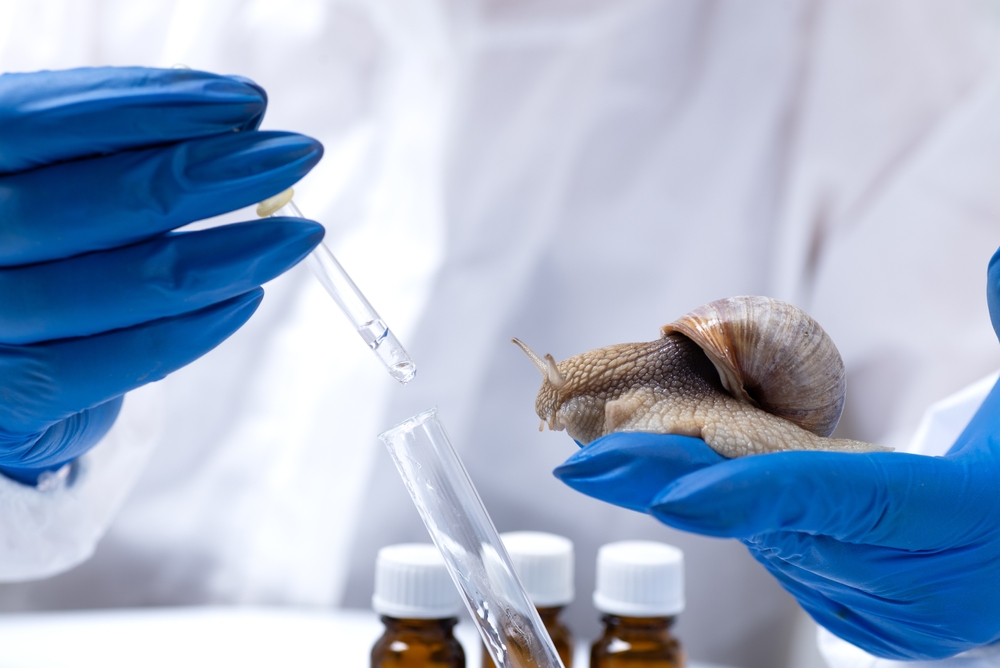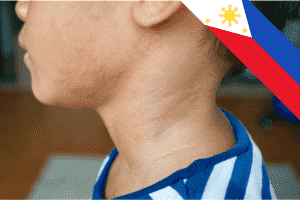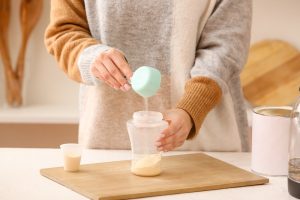Mollusc Magic or Marketing Mirage?
Discover the science behind snail mucin, the skincare sensation that’s taking the beauty world by storm. Is snail mucin truly a secret elixir, or just another passing fad?
The Rise of Snail Mucin in Asia
Snail mucin has seen a rapid surge in popularity within the Asian beauty market over the last few years.
The innovative South Korean skincare market has largely attributed this boom to capitalising on its potential. They utilise snail mucin in conjunction with other active substances such as retinol, antioxidants, vitamin C, and glycolic acid to enhance the skin’s appearance. The novelty and purported anti-ageing properties of products derived from this naturally occurring mollusc have resulted in viral interest and high consumer demand.
The skincare market in South Korea, in particular, has invested heavily in developing new treatments using snail slime. Some snail slime products claim to include up to 97% filtrate of snail secretion, which is achieved by filtering the slime more than once to improve its concentration and purity.
How Did Snail Mucin Gain Popularity?
The skincare brand Elicina, originating in Chile, traced back the origins of incorporating snail mucin into beauty products to 1995. They were inspired by the observations of farmers who noticed that their skin healed faster from scratches when they handled garden snails.
The trend didn’t gain significant momentum until a decade later, when South Korean companies introduced snail mucin products to their local market.
What is Snail Mucin, and How Does It Work?
Snail mucin, colloquially known as snail slime, is the secretion of land snails. It’s packed with nutrients including hyaluronic acid, glycoproteins, proteoglycans, and antimicrobial peptides. These components are believed to help with skin hydration, elasticity, and combating inflammation.
The properties that make snail mucin beneficial to snails also translate to potential benefits for human skin. Here’s how some key components work:
Hyaluronic Acid:
This compound is naturally present in the human body, with high concentrations in the skin, connective tissues, and eyes. It works by retaining water to keep tissues well lubricated. In skincare, it is prized for its ability to hydrate and plump the skin, reducing the appearance of fine lines and wrinkles.
Glycoproteins:
These are proteins that have a carbohydrate attached to them. In the context of skin care, they play an important role in skin health by promoting cell turnover and stimulating the skin to produce collagen and elastin, proteins that provide the skin with structure and elasticity.
Proteoglycans:
These are proteins that are heavily glycosylated (combined with carbohydrates). They fill up space in the skin’s collagen network, helping it retain water and keeping the skin firm and resilient.
Antimicrobial peptides:
These are small proteins that have antimicrobial properties. They can kill or inhibit the growth of bacteria, providing a natural form of protection against skin infections. Overall, the components in snail mucin actively hydrate the skin, promote healing and regeneration, combat inflammation, and protect against bacteria, thereby exerting beneficial effects on the skin.
It’s worth noting that while many people find snail mucin products beneficial, individual responses can vary, and what works well for one person might not work as well for another.
Weighing the Pros and Cons
Asian skincare traditions, particularly within the realm of K-beauty, have long held snail mucin in high esteem.
Skincare enthusiasts widely regard snail mucin for its beneficial properties.
The substance, commonly known as “snail secretion filtrate” in ingredient labels, contains skin-benefiting elements such as glycolic acid, hyaluronic acid, and unique glycoproteins, which actively contribute to the natural moisture factor of the skin.
Snail mucin has gained recognition for its wide array of touted benefits, including its ability to stimulate collagen production, moisturise the skin, reduce inflammation, and aid in acne healing. This versatility makes it an incredibly valuable ingredient that can address various skin concerns. Additionally, the K-beauty boom has resulted in the incorporation of snail mucin into a diverse range of skincare products, including cleansers, masks, serums, and moisturisers.
The Cons
However, it is important to consider the potential downsides of snail mucin:
- Some individuals, especially those with sensitive skin, may experience skin irritation when using products containing snail mucin.
- Ethically conscious consumers may have concerns regarding the farming practices used. The use of inhumanely farmed snails raises concerns among those who prioritise ethical sourcing and animal welfare.
- The high cost of products, ranging from $20 to $100 or more, can deter potential buyers due to brand and ingredient variations.
- While some evidence suggests that snail mucin improves skin hydration and reduces wrinkles and dark spots. However, further research is necessary to fully understand its effects.
For individuals with adverse reactions or those seeking alternatives, consider hyaluronic acid, glycerin, and vitamin C.
Key Takeaways
As we delve into the world of skincare, it’s clear that its inclusion as a key ingredient in various products has significantly shaped the landscape of the industry.
From originating in the anecdotal experiences of snail farmers in Chile to gaining wide acceptance in the beauty regimens of South Korea and now achieving global recognition, the use of this unique ingredient underscores the continuous search for natural and novel substances that promote skin health.
Indeed, the journey from the humble garden to the shelves of beauty stores worldwide is a testament to the dynamic and innovative nature of skincare.
References
- Market Research Future, 2018. Snail Beauty Products Market Research Report – Forecast to 2023 [online] Available at: https://www.marketresearchfuture.com/reports/snail-beauty-products-market-4933
- Fabbrocini, G., Bertona, M., Picazo, Ó., Pareja-Galeano, H., & Emanuele, E., 2018. Supplementation with Lactobacillus rhamnosus SP1 normalises skin expression of genes implicated in insulin signalling and improves adult acne. Beneficial microbes, 9(6), 783-791.
- RealSelf, 2017. *What Is Snail Mucin, and Will It Really Give Me Better Skin
- Tutton, M. (n.d.). Americans are putting snail slime on their faces. CNNMoney. https://money.cnn.com/2017/11/13/smallbusiness/snail-cream-beauty-products/index.html














